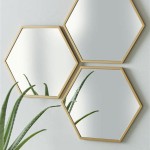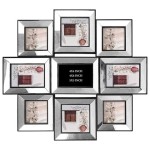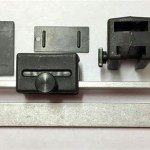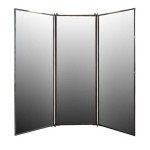How To Hang a Big Mirror
Hanging a large mirror can transform a room, adding light and creating an illusion of space. However, due to their size and weight, large mirrors require careful planning and execution to ensure they are securely mounted and pose no safety risks. This article provides a comprehensive guide on how to safely and effectively hang a large mirror.
Assessment and Planning
Before purchasing a mirror, consider the wall space available and the desired placement. Measure the dimensions of the mirror and mark the intended location on the wall using masking tape. This allows visualization of the final result and aids in identifying potential obstructions such as electrical wiring or plumbing.
Wall Type Determination
The type of wall material dictates the appropriate hanging method. Drywall requires different hardware than concrete or brick. Using a stud finder is crucial for locating wall studs, providing the most secure anchoring points. If hanging on drywall without hitting a stud, specialized drywall anchors rated for heavy objects are necessary.
Choosing the Right Hanging Hardware
Mirror hanging hardware comes in various types, including D-rings, wire, and J-hooks. For larger mirrors, heavy-duty D-rings attached to a strong backing are recommended. The weight of the mirror will determine the appropriate hardware strength. Consult the packaging of the chosen hardware for weight limits and ensure it exceeds the mirror's weight. For extremely heavy mirrors, using multiple hanging points distributed across the mirror's back provides increased stability.
Necessary Tools and Materials
Gathering the required tools and materials beforehand streamlines the hanging process. Essential items include a stud finder, measuring tape, pencil, level, drill with appropriate drill bits (depending on wall type), screwdriver, suitable wall anchors (if not using studs), mirror mounting hardware, safety glasses, and work gloves.
Marking and Preparing the Wall
Once the hanging hardware is attached to the mirror, measure the distance between the D-rings or other hanging points. Transfer these measurements to the wall, marking the locations where the wall anchors or screws will be installed. Use a level to ensure these marks are perfectly horizontal. This is crucial for preventing the mirror from hanging crookedly.
Installing Wall Anchors or Screws
If hanging the mirror on drywall without studs, install appropriate drywall anchors at the marked locations, following the manufacturer's instructions. For installations on studs, pre-drill pilot holes slightly smaller than the screw diameter to prevent the wood from splitting. This step is especially important for hardwood studs. The screws should be long enough to penetrate the stud sufficiently for secure anchoring.
Hanging the Mirror
With the wall anchors or screws securely in place, carefully lift the mirror and align the D-rings or other hanging hardware with the anchors or screws. Ensure the mirror sits flush against the wall. Once the mirror is hanging, use a level to verify its position and make any necessary adjustments. For extremely heavy mirrors, having an assistant helps with lifting and positioning.
Safety Precautions
Safety should be the top priority when hanging a large, heavy mirror. Always wear safety glasses to protect eyes from dust and debris during drilling. Work gloves offer protection and improve grip. If working on a ladder, ensure it is stable and on a level surface. Heavy mirrors can be challenging to maneuver; consider seeking assistance to prevent accidents.
Post-Installation Check
After hanging the mirror, gently push on different areas to confirm its stability. Double-check the level to ensure it remains correctly positioned. Regularly inspect the hanging hardware and wall anchors for any signs of wear or loosening. If any issues are detected, address them promptly to maintain the mirror's secure placement.
Alternative Hanging Methods for Specialized Situations
For specific situations like unusually heavy mirrors or walls unsuitable for traditional hanging methods, consider consulting a professional installer. They can assess the situation and recommend specialized solutions such as French cleats or adhesive-based hanging systems. These alternatives provide additional support and ensure the mirror is securely mounted, even under challenging circumstances.
Specific Considerations for Different Wall Types
Concrete and brick walls require different drilling techniques and hardware compared to drywall. Using the correct drill bits designed for masonry is crucial. Consult a hardware professional to determine the most appropriate anchors and installation methods for these wall types. Proper preparation ensures the mirror is securely fastened to the wall.

How To Hang A Large Or Heavy Mirror

How To Hang A Heavy Mirror

How To Hang A Large Wall Mirror Step By Tutorial

How To Hang A Heavy Mirror

How To Hang A Large Wall Mirror Step By Tutorial

How To Hang A Heavy Mirror Diy Family Handyman

Calling It Home How To Hang Something Heavy Like A Pro Diy Improvement Projects Hanging Mirror

How To Hang A Heavy Mirror C R F T Hanging Diy Home Improvement

How To Hang A Heavy Mirror C R F T

How I Installed A Really Big Mirror Merrypad Diy Network








